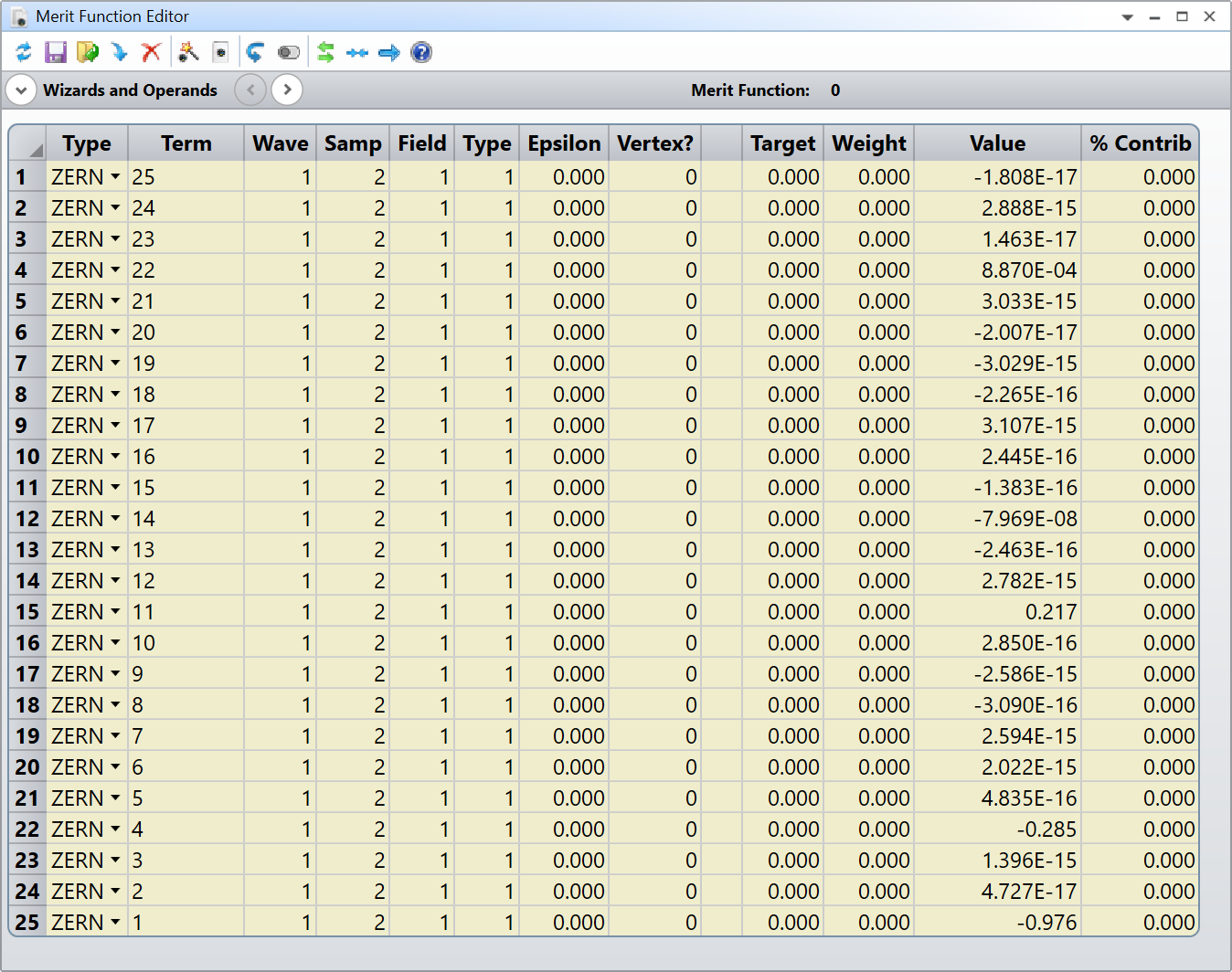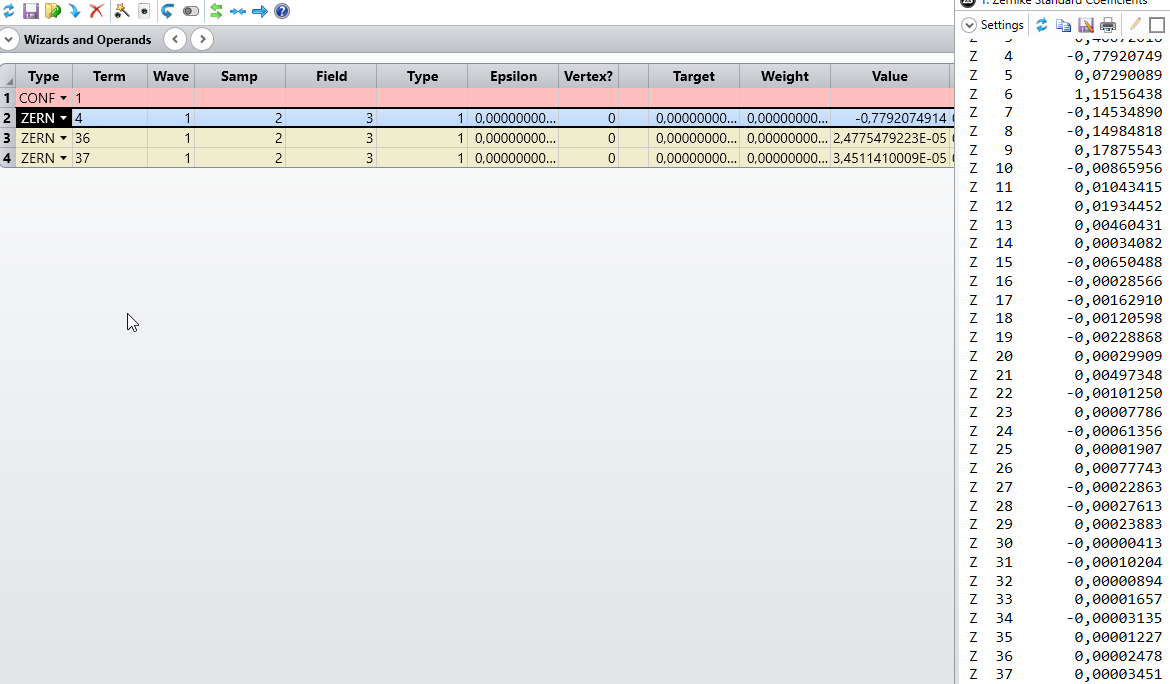Hi Hans-Jürgen,
Unfortunately, I know they are slow :(
You can always send a feedback email to Zemax support and they might create a feature request for you. Its probably not going to happen in the short term though.
Opening and parsing an analysis window isn’t that bad. Its much easier and faster if the analysis is fully implemented, but the Zernike ones aren’t.
Here is an example for you:
ZernikeStd = TheSystem.Analyses.New_ZernikeStandardCoefficients()
Settings = ZernikeStd.GetSettings()
Field = 1
Surface = 3
Wave = 1
Samp = ZOSAPI.Analysis.SampleSizes.S_64x64
Vertex = False
Sub_x = 0.0
Sub_y = 0.0
Sub_z = 0.0
Eps = 0.0
MaxTerms = 25
Settings.Field.SetFieldNumber(Field)
Settings.Surface.SetSurfaceNumber(Surface)
Settings.Wavelength.SetWavelengthNumber(Wave)
Settings.SampleSize = Samp
Settings.ReferenceOBDToVertex = Vertex
Settings.Sx = Sub_x
Settings.Sy = Sub_y
Settings.Sz = Sub_z
Settings.Epsilon = Eps
Settings.MaximumNumberOfTerms = MaxTerms
ZernikeStd.ApplyAndWaitForCompletion()
Path = 'E:\ZernikeStd.txt'
ZernikeStd.GetResults().GetTextFile(Path)
ZernikeStd.Close()
with open(Path) as F:
Lines = F.readlines()
for Index in range(38, len(Lines)):
SplitLine = Lines[Index].split()
Term = int(SplitLine[1])
Value = float(SplitLine[2])
print('Z {0} \t {1: .8f}'.format(Term, Value))
And the results for the same dummy file I did earlier:
Z 1 -0.97593483
Z 2 0.00000000
Z 3 0.00000000
Z 4 -0.28473181
Z 5 0.00000000
Z 6 0.00000000
Z 7 0.00000000
Z 8 0.00000000
Z 9 0.00000000
Z 10 0.00000000
Z 11 0.21694194
Z 12 0.00000000
Z 13 0.00000000
Z 14 -0.00000008
Z 15 0.00000000
Z 16 0.00000000
Z 17 0.00000000
Z 18 0.00000000
Z 19 0.00000000
Z 20 0.00000000
Z 21 0.00000000
Z 22 0.00088701
Z 23 0.00000000
Z 24 0.00000000
Z 25 0.00000000
Hope that helps.
Take care,
David







